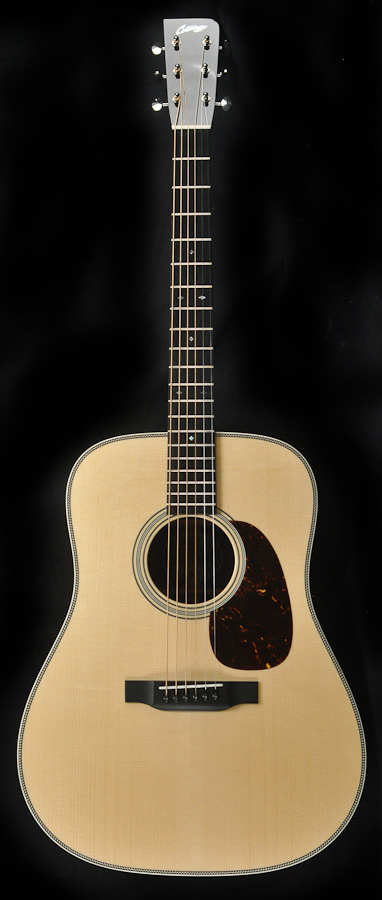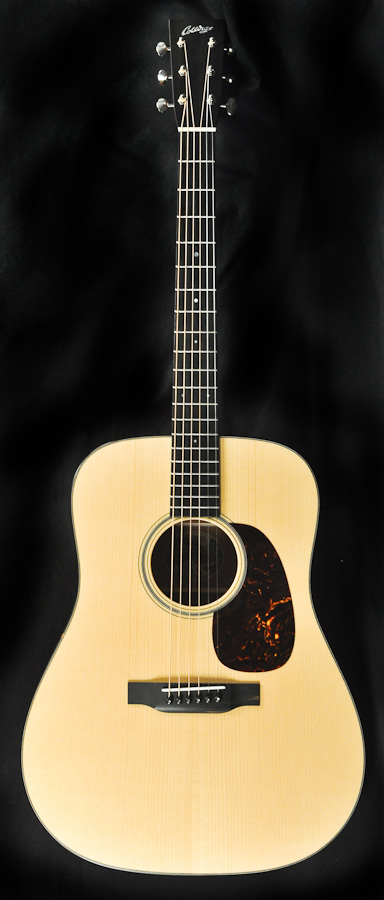Your tone begins with your top… but that’s not where it ends!
The great luthier Antonio Torres Jurado proved the importance of a guitar’s top in 1862, by crafting a fine guitar with a solid spruce top and papier-mâché back and sides (the guitar can be viewed in Barcelona’s Museu de la Música). Does this mean that the back and sides don’t matter? Of course not! Señor Jurado was just showing off. After all, he only did it once!
Let’s take, for instance, the tonal differences between two guitars we carry in our shop, the Collings D1A and the Collings D2HA. Both are dreads. Both have Adirondack tops, but the D1A has Honduran mahogany back and sides, while the D2HA has East Indian rosewood back and sides. (“1” stands for mahogany, “2” for rosewood. The “H” stands for herringbone.)
Collings D1A
(Adirondack top, mahogany back and sides)
vs.
Collings D2HA
(Adirondack top, rosewood back and sides)
The Adirondack top lends both their fundamental tone, but the back and sides add nuance. Visually, the rosewood of the D2HA is more eye-catching. Like a tiger, it can be recognized by its stripes. Sonically, it’s a little “fancier,” as well: lush overtones, long sustain, pronounced treble and bass. It’s got a real presence and structural warmth.
The D1A sounds warm, too, but it’s a different kind of warmth. While the D2HA is warm like a café on a cold fall day, the D1A is warm like home in winter. It’s a fundamental tone. A true tone. Clean, but “older.” If it were a person, they would have a mid-ranged, yet confident voice. They’d be controlled, yet open-minded. (Mahogany’s famously easy to work with, too, and I think it’s fair to assume that happy luthiers make better guitars!)
So, though Torres Jurado was certainly right to insist that your tone begins with your top, remember this is just the beginning. And also remember that, no matter the tonewood chosen, individual guitars will have nuances as well, depending on the cut of wood, how the wood was stored and aged, and other factors. Read more about the relative importance of top woods and back and side woods in our article on archtop tonewoods.



